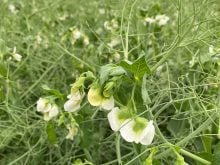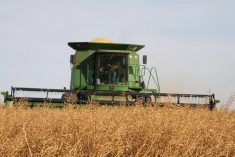Alberta Agriculture’s triticale team is making progress in its goal of increasing market opportunities for triticale.
The team consists of staff from the department’s livestock, crop diversification and business and innovation divisions.
“Producers suggest that triticale could be an important contributor to existing feeding systems, improving the financial bottom line as well as aiding sustainability,” said Trevor Kloeck, Alberta Agriculture’s business development officer in Stony Plain.
Recent dry years have shown the importance of introducing a drought-tolerant cereal like triticale into cropping systems, he added.
Read Also

Bunge’s crop mix is changing
Bunge has predominantly been a soybean processing firm, but that’s about to change after the merger with Viterra with softseed processing and grain merchandising gaining ground.
The team is taking several approaches:
- Alberta Agriculture crop breeder Don Salmon is continuing his breeding efforts on winter and spring triticale, and is working with Feral Temeli at the University of Alberta on a triticale compositional study.
“The compositional study will provide a complete nutritional profile of the crop and will enable the triticale team to pursue various markets based on the crop’s attributes,” Kloeck said.
- Kevin Swallow of the Leduc Food Processing Development Centre has received funding to explore food applications with triticale cultivars.
“Results so far indicate that triticale has a distinct and very pleasant flavour that should be appealing to consumers,” Kloeck said.
It is also suitable in many food applications, and food processors have started showing interest in the crop.
- Triticale surveys sent to growers, non-growers and provincial feedlots will be completed by November.
“Farmers appear to be convinced about the agronomic benefits triticale has to offer, but are still asking questions about animal performance when fed triticale,” Kloeck said.
“Some producers haven’t had any difficulty while others have had some problems with palatability and animal performance. A research study to address why some producers report animal performance issues and others don’t is being considered for the near future.”
- Efforts to get more representative insurance coverage for triticale have been encouraging. Yield data from triticale research trials is being evaluated to see if it can be used to benchmark triticale performance relative to common cereal varieties.
- Triticale ethanol is showing good potential.
“Research conducted at the University of Saskatchewan indicates that the ethanol yield of triticale grain is roughly equivalent to wheat,” Kloeck said.
“Given the yield benefits of triticale, especially in dry regions, the crop could become an important factor in improving the competitiveness of the ethanol industry in the future. Triticale’s abundant straw yields could also contribute significantly to future straw-based industries.”














